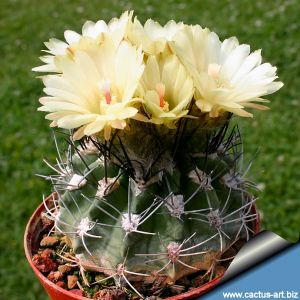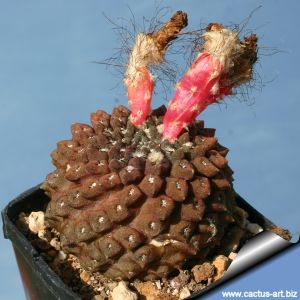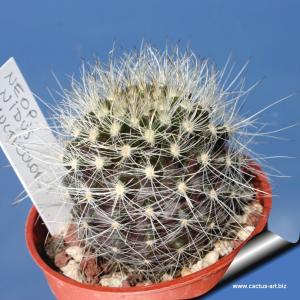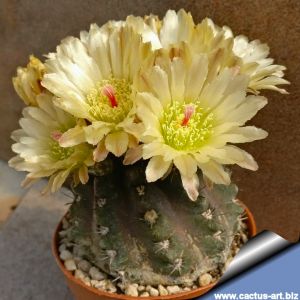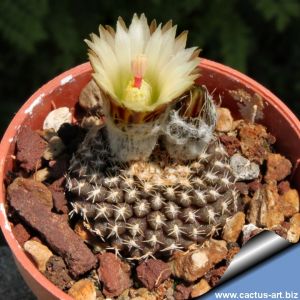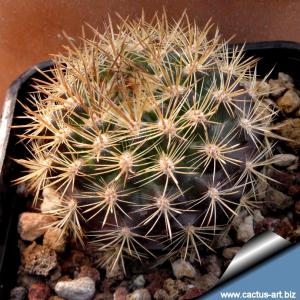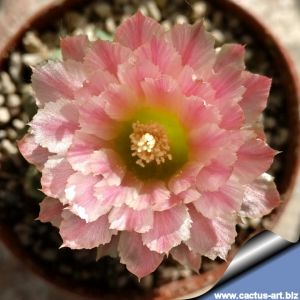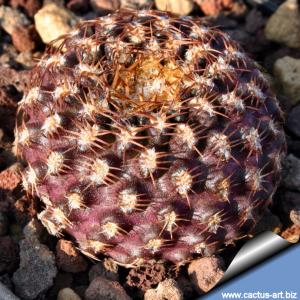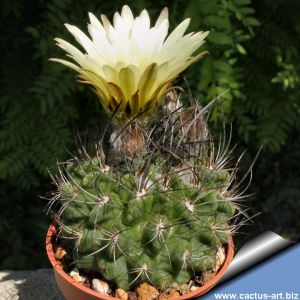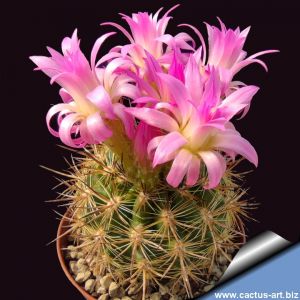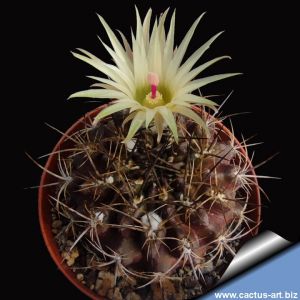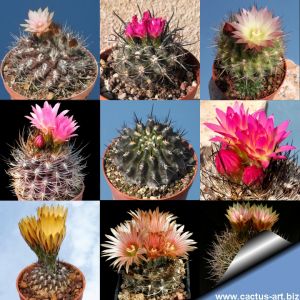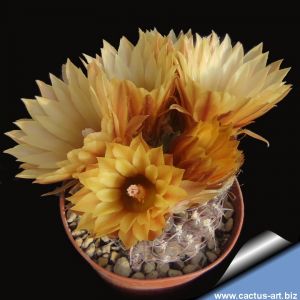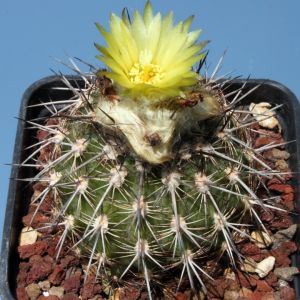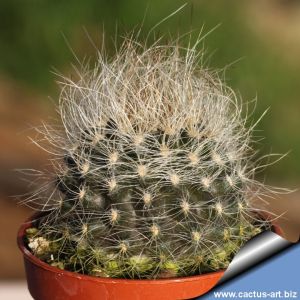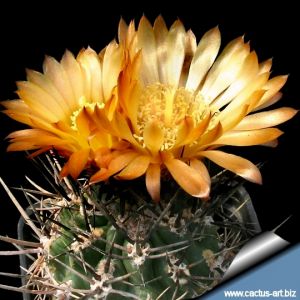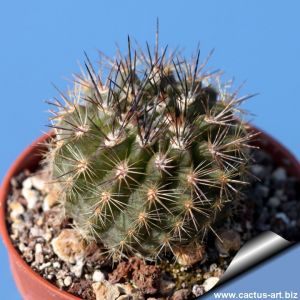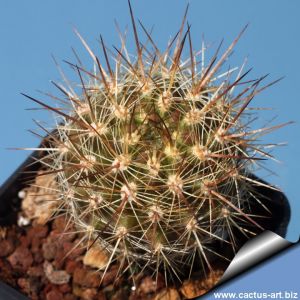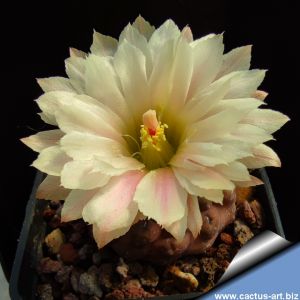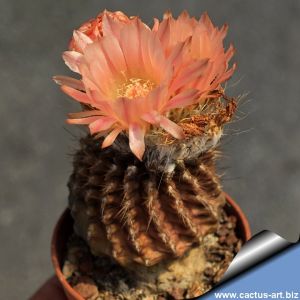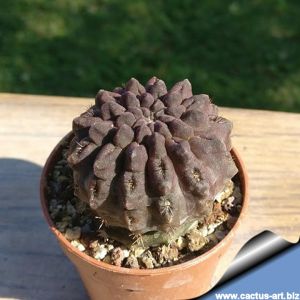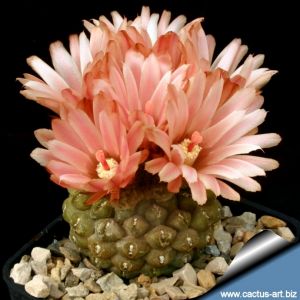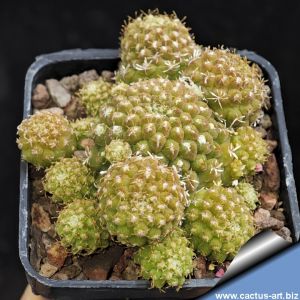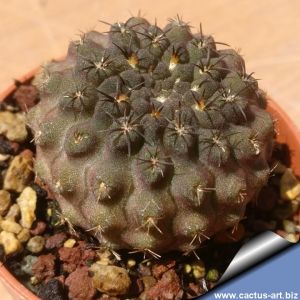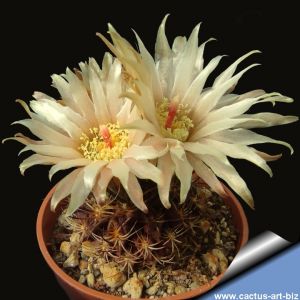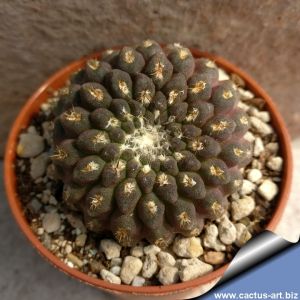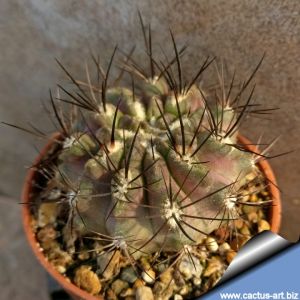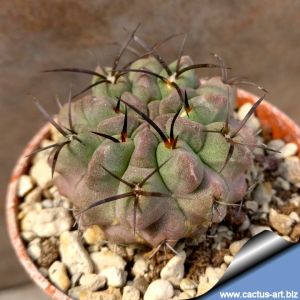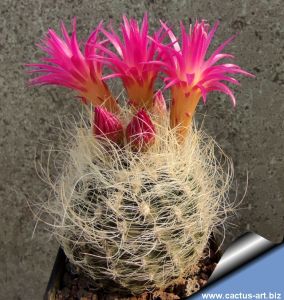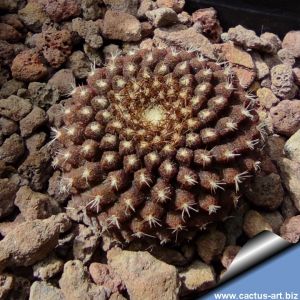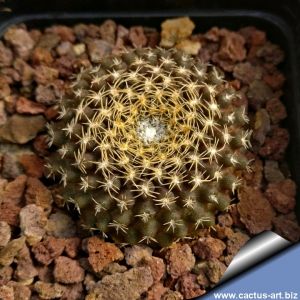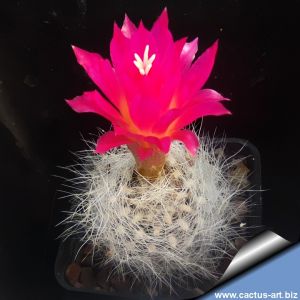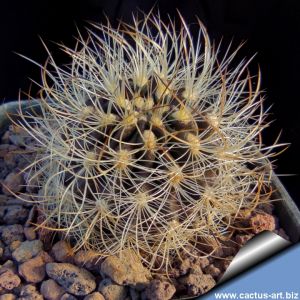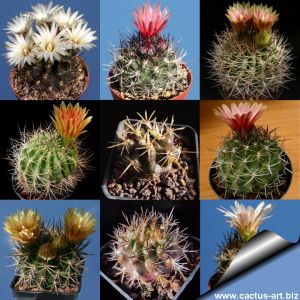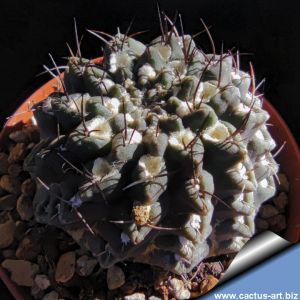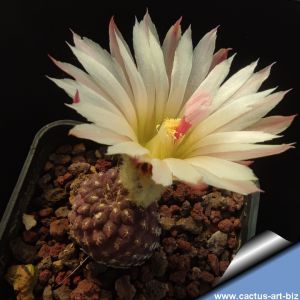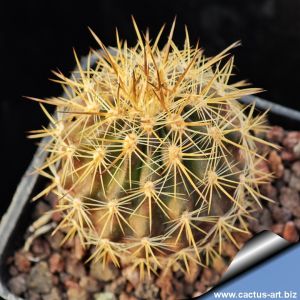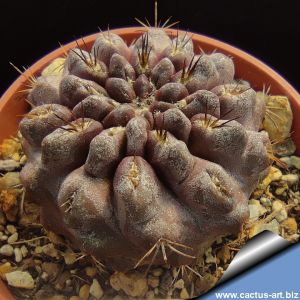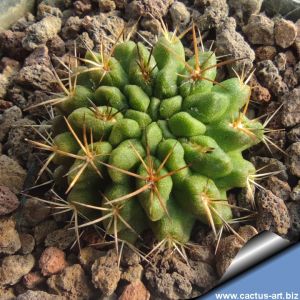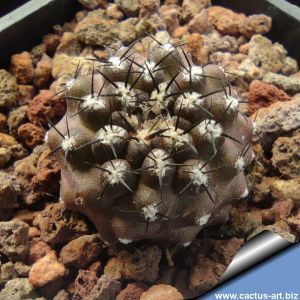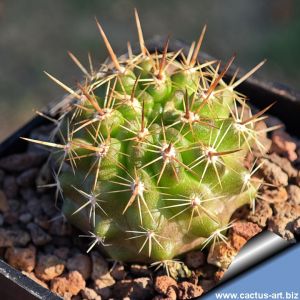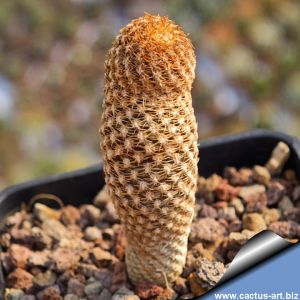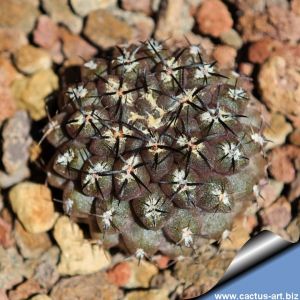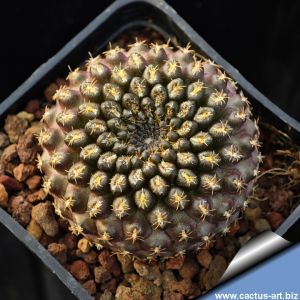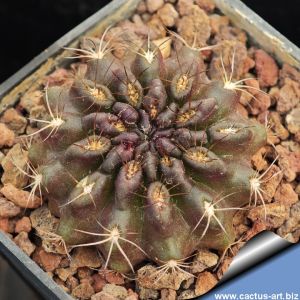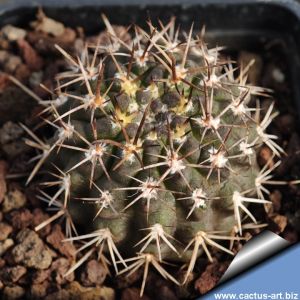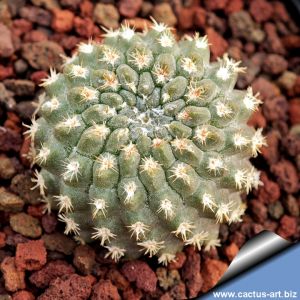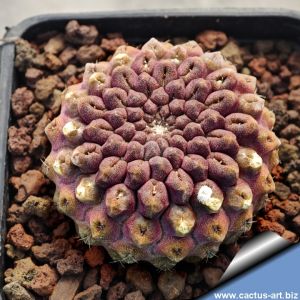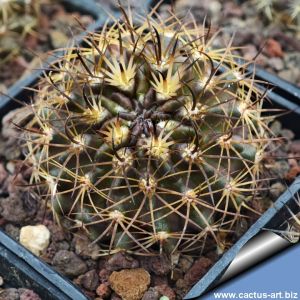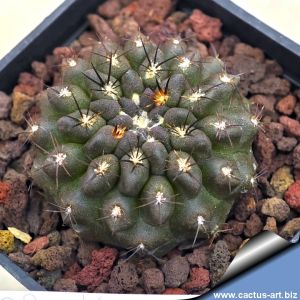-
1
This is a very beautiful and peculiar plant. The green body contrasts with the black spines. The creamy white flowers with pink hues are very pretty.
-
2
This is an almost spineless plant. If you like deep purple-bodied plants, you simply must get it (if you haven't already).
-
3
-
4
Fascinating species with flat grey-gree to dark-violet body. The spines are usually very reduced but it is quite variable. Flower greenish-yellow to pink.
-
5
-
6
-
7
The forma "viridis" is very similar to the standard species only differs for the stem colour which is a bright grass green and not a dark tannish-brown. Very nice!
-
8
It is a beautiful small geophytic cactus with a dark purple body and very short pectinated spines. The flowers are born on young areoles, and are very attractive, shining orangish with darker midline.
-
9
Stiff, needle-like spines and an olive-green to brownish or blackish stem, often covered by a greyish-white waxy coating.
-
10
An extremely variable species with bicoloured flowers: petal tips are magenta-violet, while the throat is greenish-white, creating an almost fluorescent contrast. Spines vary greatly between plants, ranging from creamy yellow to dark grey-brown.
-
11
Geophytic cactus with solitary stems rising barely above ground level, dull dark green, in the sun often tinged with purple. Spines variable, tannish-brown, dull grey or black, straight to curved. Flowers creamy-white to pink.
-
12
A mix of Eriosyce from the Neoporteria group, assorted with various species and seed-grown hybrids. Each plant is one-of-a-kind, featuring unique shapes, spination, and flower colors.
-
13
-
14
Eriosyce islayensis is a small cactus with very woolly areoles and spreading spines, but quite variable. The flowers are funnelform, yellow , born from a yellowish woolly crown in summer. Ther fruits are club shaped pinkish to red.
-
15
Highly distinctive species with long, thin, soft, and flexible spines ranging from white to creamy-yellow. In some specimens, spine color deepens to beige, light brown, or nearly black, giving each plant a unique appearance.
-
16
Dark grey green body, stout black and red spines.
-
17
-
18
-
19
-
20
Curious clone of Eriosyce prized for its prolific basal pups - rare in this genus. Olive-to-brown stems sport tiny straight spines. The real marvel? Oversized pink blooms, like silk parasols shielding the spiny body.
-
21
-
22
-
23
Forma prolifera, very rare. It branches profusely from the base and forms dense colonies.
-
24
-
25
Small geophytic cactus with a solitary, partially buried body ranging in color from gray-purple to dark copper. Straight or slightly curved brown to black spines. Flowers in shades from cream-white to soft pink.
-
26
Small geophytic cactus with a flattened, dark brown, globular stem and taproot. Features short flattened spines and woolly areoles. Summer blooms in white, pink or yellow.
-
27
Eriosyce taltalensis is spiny geophytic cactus with stems rising barely above ground level. The stem is globose or semi-globular dull dark green, in the sun often tinged with purple. The roots are fibrous, arising from a short, conical taproot.
-
28
Solitary stem boasting a stunning grey-blue-green hue with purple hints, topped with white wool. Its flowers are subtly hued in green, cream, or pink.
-
29
Selection of Eriosyce gerocephala with thin, soft, and flexible spines in pure white to creamy-white. The
dense, bright white spination gives the plant a luminous appearance and significant ornamental value.
-
30
Eriosyce chilensis v. albiflora is a beautiful cactus with pale green stems cowered with dense whitish-yellow to brownish spines. The flowers are produced in summer, closely packed apically from young areoles, they are flattish, usually creamy white.
-
31
Eriosyce aerocarpa FK564 (syn: Eriosyce odieri ssp. glabrescens, Thelocephala nuda, Eriosyce napina) is a beautiful form with very short spines.
-
32
This is a greyish-green cactus that grows very flat to the soil. Often it acquires a reddish or brownish-black colour due to sun exposure. The spines are fattened against the tubercles and pectinate yellowish, white or pale coffee coloured
-
33
Eriosyce gerocephala, best known as Neoporteria gerocephala is distinguished by thin, soft and flexible cream-white spines. Very nice!
-
34
A very characteristic cactus bearing long, slender, soft, and pliable spines in shades from creamy-white to beige or brown.
-
35
Mix of Eriosyce from the Horridocactus group, assorted with various species and seed-grown hybrids. Each plant is one-of-a-kind, featuring unique shapes, spination, and flower colors.
-
36
A small-growing plant with a low stem, spineless or shortly spiny, in dark purple to nearly black tones. Flat, solitary, mostly underground, and supported by a tuberous root.
-
37
-
38
-
39
Dark grey-brown stem and short spines that vary from brownish to greyish-black in color.
-
40
Collected by F.Ritter (FR712) in1958 as Pyrrhocactus saxifragus. Locality Guanillos, Tarapacá, Department of Iquique, Chile
-
41
Spines curved upward, greyish brown, flowers yellowish. Syn: Pyrrhocactus setosiflorus v. intermedius.
-
42
Pretty pink flowers, whitish base. Fresh green body, brown spines.
-
43
Small, low purplish-brown body with yellowish flowers. Spines are short, pressed close to the body, and curved inward.
-
44
A beautiful small-growing species with slender, finger-like stems covered in very short, appressed spines in ochre to amber tones, nestled among dense creamy wool. Large creamy-pink flowers display a distinctive silky sheen—a truly unusual hue.
-
45
Dark grey-brown body with short spines curved toward the stem, ranging from brownish to grey-black. Flowers are yellowish, adding a soft contrasting note.
-
46
Very nice!
-
47
Green, pinkish grey to a deep purple body.
-
48
Stem dark brown, round to slightly elongated. Spines are somewhat curved upward, grayish-brown. Flowers are creamy yellow, sometimes flushed with red.
Syn.: Pyrrhocactus setosiflorus var. intermedius.
-
49
Petite variety featuring smaller body and shorter spines compared to other forms.
-
50
Bellissimi ibridi robusti con corpo porpora e spine ridotte o assenti. Combinano le caratteristiche di E. occulta, dal portamento basso e appiattito, con la struttura a piccoli tubercoli di E. odieri.
-
51
Flattened green stem with spines ranging from amber to ochre and brown. Develops a large, fleshy tuberous root, often showing a distinct constriction at the neck.
-
52
A dark grey-brown body with short spines ranging from brownish to dark grey-black. It produces large, bright yellow flowers that stand out vividly against the sombre stem colour.

